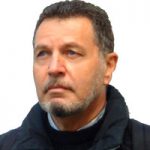
Wendy McClure
University of Idaho, USA
Sustaining place identity of 19th century towns in North America’s “New West”: a historico-geographical approach
ABSTRACT
Traditional towns in the North American mountain west that were originally planned in the late 19th century as railroad shipping points or centers of resource extraction, are experiencing significant changes to their urban form as they transform to recreation-based economies of the “New West.” Citizens and civic leaders seek strategies to preserve their inherited contexts and small-town atmosphere in the face of social change and economic re-alignment. Town morphology offers unrealized potential to support contemporary planning policy development and design practice intended to sustain historic continuity. This presentation will highlight findings from comparative studies of the region’s two most prevalent town typologies. Using an adapted historico-geographical approach, the applied research is intended to inform design decision-making by consultants, students as future practitioners, and local policy makers charged with guiding development.

Alan Penn
University College London, UK
Title: The topology of place
ABSTRACT
This paper reviews a range of different approaches to the question of defining a neighbourhood based purely on the geometry of the spatial network of streets. These approaches variously relate to cognitive and economic factors. I then review recent approaches to identify different clusters of types of network geometry that may relate to the history and geography of urban and regional development. Finally I discuss the effects of new information technologies in defining notions of neigbourhood, and propose a way in which these different infrastructures may be represented and modelled.

Giuseppe Strappa
Sapienza University of Rome, Italy
Urban Substrata : The ideas of assembly and aggregation in interpreting the ancient city
Giuseppe Strappa,
Dipartimento di Architettura e Progetto, Sapienza, Rome University. E.Mail: gstrappa@yahoo.com
ABSTRACT
The term "assemblage", which gives the title to Isuf 2019 conference, has been the object of opposing interpretations from modern architectural thought. The basis on which many theories were founded, which still today influence contemporary production, has been the different readings of the ancient city. On the one hand, the point of view of those who interpreted the assemblage as a composition of independent elements, from Piranesi to the postmodern Colin Rowe’s Collage City proposals. On the other hand, the school of thought of those who understood it as an aggregation of elements that binds the multiple into unity, from the architects of the renaissance ideal city to Saverio Muratori.
Considering ancient Rome as a case study, it is proposed to read, today, the legacy of the past as a substratum, basing the reading on the scientific methods of Urban Morphology. Unlike a ruin (from the Latin ruere, to collapse), a substratum (from sub sternere, to spread beneath) is recognised as a beginning, the living basis from which new organisms can spring.
The substratum is proposed, in conclusions, as powerful legacy of guidelines, not oriented towards imitating the past, which could support the work of contemporary architects transmitting a set of multiple, shared meanings (as in every phase of the great civil crisis) in contrast to the individualistic trend of nowadays architectural design.

Anne Vernez Moudon
University of Washington
Reworking the 20th century city
ABSTRACT
The 20th century has brought rapid urbanization worldwide, and with it the end of traditional urban forms. Modernist urban design theories together with the emergence of the automobile have shaped the contemporary city. Emerging trends are showing a reversal in the use of urban space and the accommodation of mobility patterns. This talk focuses on how some cities are now reclaiming space from the automobile and recreating traditional urban forms.
Biography
Anne Vernez Moudon is Professor Emerita of Architecture, Landscape Architecture, and Urban Design and Planning; Adjunct Professor of Epidemiology and Civil and Environmental Engineering at the University of Washington, Seattle, where she directs the Urban Form Lab (UFL http://depts.washington.edu/ufl/). She holds a BArch (University of California, Berkeley), and a Doctor ès Science (École Polytechnique Fédérale, Lausanne, Switzerland). Dr. Moudon was past-President of the International Seminar on Urban Morphology (ISUF); Faculty Associate at the Lincoln Institute of Land Policy (Cambridge, MA); Fellow of the Urban Land Institute (Washington, DC), a National Advisor to the Robert Wood Johnson Foundation program on Active Living Research; and a member of the EU COST Action TU1305, Social Networks and Travel Behavior. She is Professeur des Universités and Chercheur Associé of the NEMESIS (Equipe 8 : Environnement, Mobilité et Santé) team of IPLESP (Pierre Louis Institute of Epidemiology and Public Health) in Paris.
The UFL (http://depts.washington.edu/ufl/) specializes in the spatial analysis of the built environment as it affects travel and health behaviors. The work is supported by Departments of Transportation, the Centers for Disease Control and Prevention, the Robert Wood Johnson Foundation, the National Institutes of Health, and local planning agencies.
Dr. Moudon lectured at many universities and consulted with organizations in Europe, Latin America, and Asia. She published articles in urban design, transportation, and public health journals. Her books and monographs include Built for Change: Neighborhood Architecture in San Francisco (MIT Press 1986), Public Streets for Public Use (Columbia University Press 1991), Monitoring Land Supply with Geographic Information Systems (with M. Hubner, John Wiley & Sons, 2000), Master-Planned Communities: Shaping Exurbs in the 1990s (with B. Wiseman and K.J. Kim, APA Bookstore, 1992) and Urban Design: Reshaping Our Cities (with W. Attoe, UW College of Architecture and Urban Planning, 1995).
